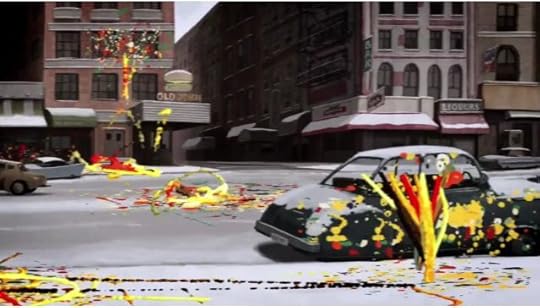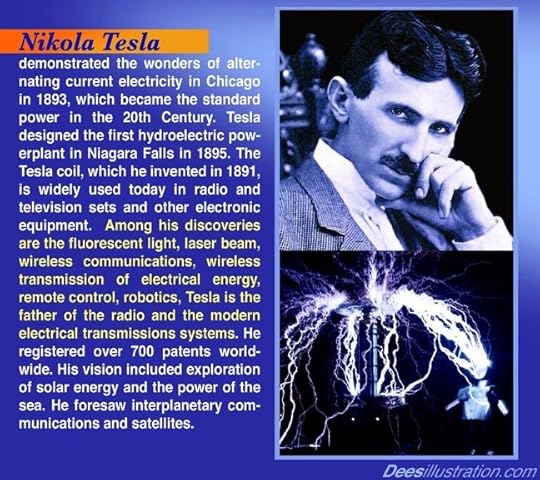Lawrence R. Spencer's Blog, page 237
July 16, 2020
A SPLASH OF ARTISTIC CONTAGION
Republished by Blog Post Promoter
A brilliant video by ChezEddy, directed by Leo Verrier on Vimeo. A SPLASH of artistic contagion!
PSYCHOBABBLE
Republished by Blog Post Promoter
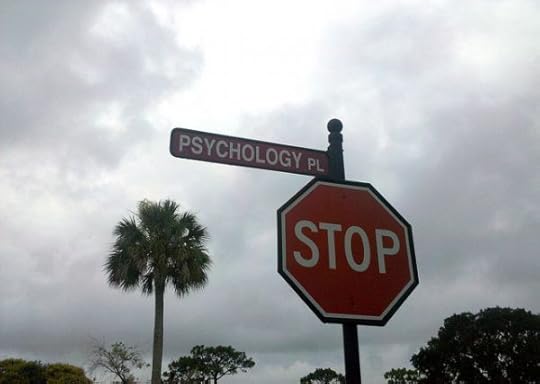
The word “psychology” means, literally: Psyche (The Spirit or Soul) + -ology (the study of). However, the so-called “science” of psychiatry is nothing whatsoever to do with Spirits or Souls. Instead it is a mind control operation funded primarily by governments, as developed, originally, by Nazi medical doctors working to exterminate the “undesirables” of human populations.
Here is a wonderful article about the current “thinking” and “innovation” of the “Priests of Modern Mental Science”. The Lords of Government Mind Control are working VERY hard to invent more new ways to confuse, befuddle and submerge our Immortal Spiritual Selves in a morass of mind-control double-speak, total bullshit, psychiatric chemicals and outright fantasy they pass off on the human population as “scientific fact”. These are the very beings that George Orwell warned us about in the book 1984. And, the very same “prison guards” described in the military transcripts published in the book Alien Interview.
These maniacs are behind every single school yard shooting massacre, every war, and every covert operation being run by every secret service activity on planet Earth. This report illustrates the mind-boggling nonsense of the “science of psychobabble”. Beware and avoid.
“What Are They Doing? My Visit to a Psychology Conference
(Reposted from Neatorama) Article by Alice Shirrell Kaswell, AIR Staff, Interpretive Illustrations by Marian Parry
“In April [1998], it was my privilege to attend the joint convention of the Western Psychological Association and the Rocky Mountain Psychological Association (WRMPA). The four-day event took place at the Albuquerque Convention Center, in Albuquerque, New Mexico. Wandering from room to room, I found many surprising and delightful things.
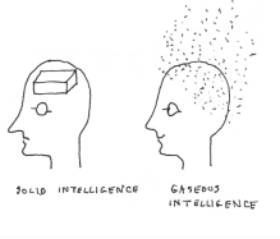 Terror
Terror
For me, the highlight of the convention was a lecture—a prestigious “invited presentation”—by Jeff Greenberg of the University of Arizona. The topic was “Managing the Terror of Being Human: Theory and Research”. The man knows his subject cold, as you can see from this description he wrote in the convention guidebook:
Biography
My terror began in the Bronx in 1954. It was amplified by my undergraduate experience at Penn and my graduate training at SMU and the University of Kansas. It has continued to grow over my 15 years at the University of Arizona.
Ignore the Face
I also enjoyed a lecture by Joseph J. Campos of the University of California at Berkeley. Campos raised the question, “Does the Face Really ‘Express’ Emotions?” His answer was a ringing No, “except under very special conditions.”
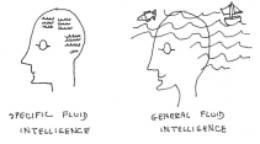 Fluid Meaning
Fluid Meaning
I accidentally touched off a minor incident the day after Georgia Tech professor Randy Engle gave a presentation on the topic “Working Memory Capacity, Controlled Attention and General Fluid Intelligence”. I asked nine experienced psychology professors to define the phrase “general fluid intelligence”. None of them could, although one did opine that “the lecturer probably knows what it means.”
Poster Sessions: Smells, Oils, a Princess, and Hair
Although there were many stimulating lectures, the most exciting action was in the poster sessions. In case you’ve never been to a poster session, I should explain the general idea. Dozens of student teams, and the occasional professor, each hung up a poster describing their recent projects. In each session, you can stroll the aisles and see anywhere from 20 to 50 or more posters.
their recent projects. In each session, you can stroll the aisles and see anywhere from 20 to 50 or more posters.
The first poster session, held on Thursday at 9:00 a.m., celebrated the general themes “Human Learning, Memory, and Cognition.” I was especially roused by three special posters: “Effects of Pleasant Ambient Odor on Memory Recall;” “Flash-bulb Memories for the Death of Princess Diana;” and “Essential Oils’ Effects on Memory.”
An 11:00 a.m. poster session concerned “Applied Psychology.” One poster discoursed on “The Effects of Odor and Stress on Mood.” Another, more abstruse, was entitled “Perceived Age of Teenage Females: Effect of Complexion, Makeup, Hairstyle, and Apparel.” I found it provocative.
A 1:00 p.m. poster session delved into “Social Issues”, and featured a gem of a poster called “The Influence of Male Facial Hair on Perceptions of Age.” It, too, must be described as provocative.
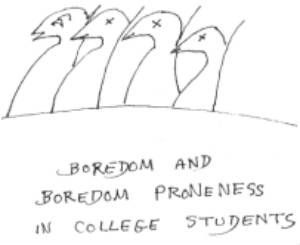 Boredom
Boredom
The convention was a multi-ring circus, with more simultaneous wonders than any one person could take in. Also at 1:00, but down the hall from the poster session, Mary B. Harris and Keith Zvoch of the University of New Mexico presented their paper on “Boredom and Boredom Proneness in College Students.” Some members of the audience found it stimulating.
More Smells, Parking, and Arousal
Friday morning was lovely in Albuquerque, with pink and blue skies, comfy temperatures, and psychologists in every nook and cranny. The 10:00 poster session was all about “Brain Function and Sensory Process.” There was an impressively worded poster entitled “Anterior EEG Asymmetry and Odor Hedonics: Gender Effects”. Not far away, an anxious crowd perused a poster called “Human Foraging Strategies: Outcomes for Campus Parking.” A knot of students pored intently over a poster called “Arousal, Sleep, and Time Perspective in University Students.” Sadly, only a few of them even glanced at the poster with the most intriguing title: “Can a Rat Who Has Never Known Water Know Thirst?”
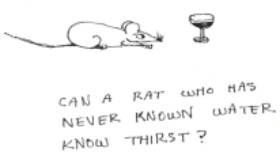 Smiles Different Similarities, Photos
Smiles Different Similarities, Photos
A noontime poster session on “Social-Personality Psychology” contained two special treats: “How Smiling and Pupil Dilation Affect Perceived Personality” and “Stereotype Reduction Through Similarity Differences.”
The noon hour also featured another prestigious “invited presentation” in the main ballroom. Roger S. Ulrich of Texas A&M University described his research on patients in surgical recovery rooms. As the patients emerge from their anesthetic haze, Ulrich shows them big color photographs of the great outdoors. If I understood him correctly, Ulrich said that this “improves health outcomes,” and that therefore his is actively marketing his services to hospitals and clinics.
At 1:20 in the same ballroom, the editor of the Annals of Improbable Research delivered another of the convention’s “invited presentations.” The topic was “Improbable Research and the Ig Nobel Prizes.” Curiously this was the only session in four days in which I saw people laughing. It began at 1:20 rather than 1:00 on the dot because the previous lecturer, Roger S. Ulrich, wouldn’t stop talking about how hospitals should buy his nature photos.
Punching, Dolls, and Car Characters
The Friday 1:00 poster session treated us to research on the following topics: “Boxer and Spectators: Perceptions and Characteristics of Pugilism”; “Body Satisfaction in Relation to Media Exposure, Self-Monitoring, and Barbie Doll Ownership”; “Effects of Descriptive Norms and Self-Awareness on Littering”; and my favorite of the day, “Car Color: An Indicator of Driver Personality.”
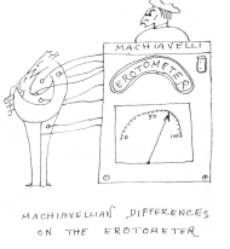 Sex, Sex, Paranoia, Hostility, and Sex
Sex, Sex, Paranoia, Hostility, and Sex
The Saturday early morning poster session delved further into the theme of “Social-Personality Psychology”. I saw a variety of interesting posters: “Situational Capture of Cardiovascular Arousal During an Erotic Episode”; “Machiavellian Differences on the Erotometer”; “Paranoia: Differences in Social Desirability”; and “Hostile Automatic Thoughts: A Validity Study.” Oh—and I shouldn’t forget to mention a crowd favorite: “Hair Stylists; Therapeutic Characteristics and Their Clients’ Levels of Self-Disclosure.” All in all, this session was a most interesting way to begin a Saturday.
And the 10:00 session was, if anything, even better. Its overall topic, “Stress and Coping”, was highlighted by two posters. The first, entitled “Sleep Quality and Anxiety Affect Distress Scores Measured During Finals”, was of special interest to students. The other, “Health Effects of the Interruption of an Emotional Writing Paradigm”, was of special interest to anyone who wanted to know what an Emotional Writing Paradigm is.
The noontime poster session dealt with “Education Psychology.” Three posters stood out from the bunch: “Introductory Psychology Activities Using Van Gogh as a Case Study”; “Predictors of Academic Procrastination in College Students”; and the dryly written yet riveting “Ethical Issues Involving Graduate Teaching Assistants.” A senior professor of my acquaintance saw me contemplating the “Ethical Issues” poster, and stage whispered “They should have called it ‘Can We Sleep Together?'”
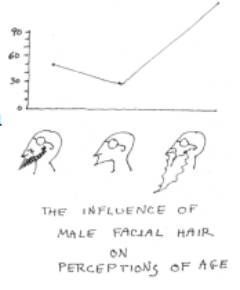 Simulating Boredom
Simulating Boredom
Saturday afternoon, Carl. N. Perlotto, M. Lyn Hoefer, and N. Clayton Silver of the University of Nevada at Las Vegas presented their paper “The Ludic Love Style: Difference in Sexual Boredom”. My courage failed me, so I did not attend their session.
I did manage to drop in, later, on the final poster session of the day, and so was able to learn about “Age-Related Differences in the Attentional Blink.”
Odor Ordinance, Ungrateful Dread, and Exeunt
Sunday, the final day of the convention, was a whirl of brunches and business card swapping. I caught Cheryl L. Asmus and Paul Bell’s 9:00 a.m. talk on “Post-Implementation of an Odor Ordinance,” and then zipped through the convention’s final poster session. It was there that I encountered the inspirational “Depressed Individuals Show No Gratitude.”
At that point I had to rush off to the hotel, grab my bags, and cab it to the airport, tired, laden with notes and trinkets, but grateful for the chance to have seen so many remarkable “psychological wonders”.
_____________________
This article is republished with permission from the September-October 1998 issue of the Annals of Improbable Research. You can purchase back issues of the magazine or subscribe to receive future issues, in printed or in ebook form. Or get a subscription for someone as a gift! Visit their website for more research that makes people LAUGH and then THINK.
July 15, 2020
SOURCE OF BIODIVERSITY
Republished by Blog Post Promoter
“…there are millions of species (Footnote) of insects. About 350,000 of these are species of beetles. (Footnote) There may be as many as 100 million species of life forms on Earth at any given time. In addition, there are many times more extinct species of life on Earth than there are living life forms. Some of these will be rediscovered in the fossil or geological records of Earth.
The current “theory of evolution” of life forms on Earth does not consider the phenomena of biological diversity. Evolution by natural selection is science fiction. One species does not accidentally, or randomly evolve to become another species, as the Earth textbooks indicate, without manipulation of genetic material by an IS-BE. (Footnote)
[image error]A simple example of IS-BE intervention is the selective breeding of a species (Footnote) on Earth. Within the past few hundred years several hundred dog breeds and hundreds of varieties of pigeons and dozens of Koi fish have been “evolved” in just a few years, beginning with only one original breed. Without active intervention by IS-BEs, biological organisms rarely change.
The development of an animal like the ‘duck-billed platypus’ required a lot of very clever engineering to combine the body of a beaver with the bill of a duck and make a mammal that lays eggs. Undoubtedly, some wealthy client placed a “special order” for it as a gift or curious amusement. I am sure the laboratory of some biotechnical company worked on it for years to make it a self-replicating life form!
The notion that the creation of any life form could have resulted from a coincidental chemical interaction moldering up from some primordial ooze is beyond absurdity! Factually, some organisms on Earth, such as Proteobacteria,
Creating life forms is very complex, highly technical work for IS-BEs who specialize in this field. Genetic anomalies are very baffling to Earth biologists who have had their memory erased. Unfortunately, the false memory implantations of the “Old Empire” prevent Earth scientists from observing obvious anomalies.”
–Excerpted from the book ALIEN INTERVIEW
“…species…”
“In biology, a species is one of the basic units of biological classification and a taxonomic rank. A species is often defined as a group of organisms capable of interbreeding and producing fertile offspring. While in many cases this definition is adequate, more precise or differing measures are often used, such as based on similarity of DNA or morphology. Presence of specific locally-adapted traits may further subdivide species into subspecies.
The commonly used names for plant and animal taxa sometimes correspond to species: for example, “lion,” “walrus,” and “Camphor tree,” each refers to a species. In other cases common names do not: for example, “deer” refers to a family of 34 species, including Eld’s Deer, Red Deer and Wapiti (Elk). The last two species were once considered a single species, illustrating how species boundaries may change with increased scientific knowledge.
Each species is placed within a single genus. This is a hypothesis that the species is more closely related to other species within its genus than to species of other genera. All species are given a binomial name consisting of the generic name and specific name (or specific epithet). For example, Pinus palustris (commonly known as the Longleaf Pine).
A usable definition of the word “species” and reliable methods of identifying particular species are essential for stating and testing biological theories and for measuring biodiversity. Traditionally, multiple examples of a proposed species must be studied for unifying characters before it can be regarded as a species. Extinct species known only from fossils are generally difficult to give precise taxonomic rankings to. A species which has been described scientifically can be referred to by its binomial names.
Nevertheless, as Charles Darwin remarked,
‘I look at the term species as one arbitrarily given for the sake of convenience to a set of individuals closely resembling each other …. it does not essentially differ from the term variety, which is given to less distinct and more fluctuating forms. The term variety, again in comparison with mere individual difference, is also applied arbitrarily, and for mere convenience sake.’
Because of the difficulties with both defining and tallying the total numbers of different species in the world, it is estimated that there are anywhere between 2 million and 100 million different species.” — Reference: Wikipedia.org
“…species of beetle…”
“Beetles are a group of insects which have the largest number of species. They are placed in the order Coleoptera, which means “sheathed wing” and contains more described species than in any other order in the animal kingdom, constituting about twenty-five percent of all known life-forms. Forty percent of all described insect species are beetles (about 350,000 species), and new species are frequently discovered. Estimates put the total number of species, described and undescribed, at between 5 and 8 million.
Beetles can be found in almost all habitats, but are not known to occur in the sea or in the polar regions. They interact with their ecosystems in several ways. They often feed on plants and fungi, break down animal and plant debris, and eat other invertebrates. Some species are prey of various animals including birds and mammals. Certain species are agricultural pests, such as the Colorado potato beetle Leptinotarsa decemlineata, the boll weevil Anthonomus grandis, the red flour beetle Tribolium castaneum, and the mungbean or cowpea beetle Callosobruchus maculatus, while other species of beetles are important controls of agricultural pests. For example, coccinellidae (“ladybirds” or “ladybugs”) consume aphids, scale insects, thrips, and other plant-sucking insects that damage crops.” –– Reference: Wikipedia.org
“ One species does not evolve to become another species, as the Earth textbooks indicate, without the intervention and manipulation of genetic material by an IS-BE.”
“Genetic engineering , recombinant DNA technology, genetic modification / manipulation (GM) and gene splicing are terms applied to the direct manipulation of an organism’s genes. Genetic engineering is not to be confused with traditional breeding where the organism’s genes are manipulated indirectly. Genetic engineering uses the techniques of molecular cloning and transformation. Genetic engineering endeavors have found some success in improving crop technology, the manufacture of synthetic human insulin through the use of modified bacteria, the manufacture of erythropoietin in Chinese hamster ovary cells, and the production of new types of experimental mice such as the oncomouse (cancer mouse) for research.
Since a protein sequence is specified by a segment of DNA called a gene, novel versions of that protein can be produced by changing the DNA sequence of the gene. The companies that own the modified genome are able to patent it. In the case of basic crops, the companies gain control of foodstuffs, controlling food production on a large scale and reducing agrobidiversity to a few varieties. The only apparent interest in promoting this tecnology appears to be purely economic, despite the claims of seed companies such as Monsanto and Novartis to solve the world food scarcity. It is now popularly understood that it is not the lack of food on a wholewide scale that is the main problem, but its distribution, aggravated by prohibitive tariffs by rich nations. Genetically modified crops do not reduce hunger. The majority of genetically crops are destined for animal food to meet the high demand for meat in developed countries. No genetic modification have yet to serve the needs of mankind despite all the promises in this direction.
However, even with regard to this technology’s great potential, some people have raised concerns about the introduction of genetically engineered plants and animals into the environment and the potential dangers of human consumption of GM foods. They say that these organisms have the potential to spread their modified genes into native populations thereby disrupting natural ecosystems. This has already happened.” — Reference: Wikipedia.org
“… genetic manipulation of a species…”
“How much genetic variation is there? Historical debate: Classical school held that there was very little genetic variation, most individuals were homozygous for a “wild-type” allele. Rare heterozygous loci due to recurrent mutation; natural selection purges populations of their “load” of mutations. Balance school held that many loci will be heterozygous in natural populations and heterozygotes maintained by “balancing selection” (heterozygote advantage). Selection thus plays a role in maintaining variation.
How do we measure variation? To show that there is a genetic basis to a continuously varying character one can study 1) resemblance among relatives: look at the offspring of individuals from parents in different parts of the distribution; can estimate heritability (more later). 2) artificial selection: pigeons and dogs show that there is variation present; does not tell how much variation.” — Reference: http://biomed.brown.edu/Courses/BIO48...
“… Proteobacteria…”
“The Proteobacteria are a major group (phylum) of bacteria. They include a wide variety of pathogens, such as Escherichia, Salmonella, Vibrio, Helicobacter, and many other notable genera. Others are free-living, and include many of the bacteria responsible for nitrogen fixation. The group is defined primarily in terms of ribosomal RNA (rRNA) sequences, and is named for the Greek god Proteus (also the name of a bacterial genus within the Proteobacteria), who could change his shape, because of the great diversity of forms found in this group.
All Proteobacteria are Gram-negative, with an outer membrane mainly composed of lipopolysaccharides. Many move about using flagella, but some are non-motile or rely on bacterial gliding. The last include the myxobacteria, a unique group of bacteria that can aggregate to form multicellular fruiting bodies. There is also a wide variety in the types of metabolism. Most members are facultatively or obligately anaerobic and heterotrophic, but there are numerous exceptions. A variety of genera, which are not closely related to each other, convert energy from light through photosynthesis. These are called purple bacteria, referring to their mostly reddish pigmentation.”
— Reference: Wikipedia.org
“…Phylum…”
“In biological taxonomy, a ‘phylum’ is a taxonomic rank at the level below Class and above Kingdom. “Phylum” is adopted from the Greek φυλαί phylai, the clan-based voting groups in Greek city-states.” — Reference: Wikipedia.org
“…intensely hot blue star…”
“Blue stars are very hot and very luminous; in fact, most of their output is in the ultraviolet range. These are the rarest of all main sequence stars, constituting as few as 1 in 3,000,000 in the solar neighborhood. (Blue) stars shine with a power over a million times our Sun’s output. Examples: Zeta Orionis, Zeta Puppis, Lambda Orionis, Delta Orionis”.. — Reference: Wikipedia.org
FRENCH KISSCICLE
July 13, 2020
NIKOLA TESLA: 1904 WORLD SYSTEM POWER PLANT
Republished by Blog Post Promoter
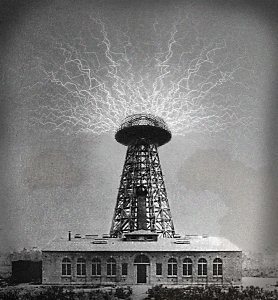 “The first World System power plant can be in operation in nine months.”
– Nikola Tesla, 1904
“The first World System power plant can be in operation in nine months.”
– Nikola Tesla, 1904
The Wireless electricity transmission system pioneered by Dr Nikola Tesla has the potential to meet our future global energy needs, if only the funding and organizational structures can be put in place as a matter of urgency.
Nikola Tesla, the father of AC electricity, is responsible for recognising that an atmospheric and a terrestrial storage battery already exists everywhere on Earth, for the benefit of mankind. A century later, only a few visionary scientists recognise the untapped renewable reservoir of terawatts of electrical power (3,000 gigawatts) that sits dormant above us, waiting to be utilised.
The fateful decision in 1905 by J.P. Morgan to abandon Tesla’s Wardenclyffe Tower on Long Island (after investing US$150,000 – in 1905 dollars) was the result of learning that it would be designed mainly for wireless transmission of electrical power rather than for telegraphy. No more capital was forthcoming for the project that Morgan initiated, even when the equipment alone cost about US$200,000. Morgan believed that he would “have nothing to sell except antennas [and refused] to contribute to that charity.”
Tesla tried and tried for years until, in 1917, the US government blew up the abandoned Wardenclyffe Tower because suspected German spies were seen ‘lurking’ around it. With Edison as his willing ally, Morgan even publicly discredited Tesla’s name, so that all of the school textbook publishers of the time removed any reference to him. Is it any wonder why, even today – more than 100 years later – hardly anyone knows who Tesla is?
The rest of this article will present a physics and electrical engineering argument for a subsequently forgotten engineering alternative for energy generation and transmission.
As Tesla experimented with a 1.5 megawatt system in 1899 at Colorado Springs, he was amazed to find that pulses of electricity he sent out passed across the entire globe and returned with “undiminished strength”. He said; “It was a result so unbelievable that the revelation at first almost stunned me.” [Compared with this ‘undiminished strength”, more than two-thirds of current-day electrical power disappears and is totally wasted, due to transmission losses and other factors between current-day power stations and the electricity consumer – Ed]
This verified the tremendous efficiency of his peculiar method of pumping current into a spherical ball to charge it up, before discharging it as a pulse of electrical energy: a ‘longitudinal’ acoustic type of compression wave, rather than an electromagnetic Hertzian type of transverse wave. It was therefore more akin to electrostatic discharge than wave mechanics.
Tesla also planned to include a stationary resonant wave creation globally, within the Earth-ionosphere cavity, as part of the wireless transmission of power. Examining the pair of 1900 patents, #645,576 and #649,621 (each using the same figure on the first page), we find in the first patent that Tesla designed a quarter-wave antenna (fifty miles of secondary wire for a 200-mile long wavelength). More important is the sphere on the top which is supposed to be a conductive surface on a balloon, raised high enough to be radiating in “rarified air”.
As Tesla stated: “That communication without wires to any point on the globe is practical with such apparatus would need no demonstration, but through a discovery which I made I obtained absolute certitude. Popularly explained, it is exactly this: When we raise the voce and hear an echo in reply, we know that the sound of the voice must have reached a distant wall, or boundary, and must have been reflected from the same. Exactly as the sound, so an electrical wave is reflected, and the same evidence which is afforded by an echo is offered by an electrical phenomenon known as a ‘stationary’ wave – that is, a wave with fixed nodal and ventral regions. Instead of sending sound vibrations toward a distant wall, I have sent electrical vibrations toward the remote boundaries of the Earth, and instead of the wall the Earth has replied. In place of an echo I have obtained a stationary electrical wave, a wave reflected from afar.” [Reflected from the antipodean point on the far side of the globe – Ed]
Nikola Tesla’s discovery of pulsed propagation of energy does not resemble the standard transverse electromagnetic waves so familiar to electrical engineers everywhere. Many engineers and physicists have dismissed Tesla’s wireless energy transmission as unscientific, without examining the unusual characteristics and benefits of longitudinal waves – which are the z-component solutions of Maxwell’s equations.
Tesla wrote: “That electrical energy can be economically transmitted without wires to any terrestrial distance, I have unmistakably established in numerous observations, experiments and measurements, qualitative and quantitative. These have demonstrated that it is practicable to distribute power from a central plant in unlimited amounts, with a loss not exceeding a small fraction of one percent in the transmission, even to the greatest distance, 12,000 miles – to the opposite end of the globe.”
Tesla was an electrical genius who revolutionized our world with AC power in a way that DC power could never have accomplished, since the resistance of any transmission lines (except, perhaps for superconductive ones) is prohibitive for direct current. He deserved much better treatment from the tycoons of his age, than to spend the last forty years of his life in abject poverty. However, he was too much of a gentleman to hold a grudge. Instead, regarding the magnifying transmitter, Tesla wrote in his autobiography: “I am unwilling to accord to some small-minded and jealous individuals the satisfaction of having thwarted my efforts. These men are to me nothing more than microbes of a nasty disease. My project was retarded by laws of nature. The world was not prepared for it. It was too far ahead of time. But the same laws will prevail in the end and make it a triumphal success.”
Tesla’s World System
Tesla’s ‘world system’ was conceptually based on three of his inventions:
1. The Tesla Transformer (Tesla coil);
2. The Magnifying Transmitter (transformer adapted to excite the Earth);
3. The Wireless System (efficient transmission of electrical energy without wires).
Tesla stated: “The first World System power plant can be in operation in nine months. With this power plant it will be practicable to attain electrical activities of up to ten million horsepower (7.5 billion watts), and it is designed to serve for as many technical achievements as are possible without due expense.”
Tesla’s calculated power levels have been conservatively estimated and recently updated with contemporary physics calculations by Dr Elizabeth Rauscher. For example, Professor Rauscher shows that the Earth’s ionosphere and magnetosphere contain sufficient potential energy, at least three billion kilowatts (three terawatts) respectively, so that the resonant excitation of the Earth-ionoshere cavity can reasonably be expected to increase the amplitude of natural ‘Schumann’ frequencies, facilitating the capture of useful electrical power.
Tesla knew that the earth could be treated as one big spherical conductor and the ionosphere as another, bigger, spherical conductor, so that together they have parallel plates and thus comprise a “spherical capacitor”. Rauscher calculates the capacitance to be about 15,000 microfarads for the complete Earth-ionosphere cavity capacitor. In 1952, W. O. Schumann predicted the ‘self-oscillations’ of the conducting sphere of the Earth, surrounded by an air layer and ionosphere, without knowing that Tesla had found the Earth’s fundamental frequency fifty years earlier. [Close to 7.83 beats per second; light and other energies traveling at local lightspeed wrap around the globe’s circumference roughly 7.83 times each second, at the level of the ionosphere – Ed]
“All that is necessary,” says Dr James Corum, “is that Tesla’s transmitter power and carrier frequency be capable of round-the-world propagation.” In fact, Tesla (in the Los Angeles Times,December 1904) stated: “With my transmitter I actually sent electrical vibrations around the world and received them again, and I then went on to develop my machinery.” Dr Corum notes in an article on Tesla’s ELF (extremely low frequency) oscillator that the tuned circuit of Tesla’s magnifying transmitter was the whole Earth-Ionosphere cavity.
Corum explains that a mechanical analog of the lumped-circuit Tesla coil is an easier model for engineers to understand. From a mechanical engineering viewpoint, the ‘magnifying factor’ can be successfully applied to such a circuit. “The circuit is limited by only the circuit resistance. At resonance, the current through the circuit rises until the voltage across the resistance is equal to the source voltage. This circuit was a source of deep frustration to Edison because voltmeter readings taken around the loop did not obey Kirchoff’s laws!” As a result, Edison claimed such a circuit was only good for electrocution chairs.
Earth’s Renewable Energy
Tesla’s World System activates the Earth’s renewable electrical storage battery, which normally sits dormant except during lightning strikes. Regarding simply the electrostatic storage capacity of the ionosphere, Dr Oleg Jefimenko, author of Electrostatic Motors, explains that during one electrical storm, the atmospheric electric field dissipates at least 0.2 terawatts (billion kilowatts), indicating that the entire Earth must have even more total available energy.
Furthermore, the power loss experienced by Tesla’s pulsed electrostatic discharge mode of propagation was less than five percent over 25,000 miles. Dr Van Voorhies states that “path losses are 0.25 dB/Mm at 10 Hz” – which is so minimal it is difficult to believe for engineers who are used to transverse waves, a resistive medium and line-of-sight propagation modes that can dissipate 10 dB/km at 5 MHz.
The capacitive dome of the Wardenclyffe Tower, like the conductive balloon of Tesla’s patent #645,576, is a key to understanding the longitudinal waves. Dr Rauscher quotes Tesla: “Later he compared it to a Van de Graaff generator. He also explained the purpose of Wardenclyffe: ‘…one does not need to be an expert to understand that a device of this kind is not a producer of electricity like a dynamo, but merely a receiver or collector with amplifying qualities.”
Only a few great physicists, like Dr Elizabeth Rauscher, Dr James Corum and Dr Konstantin Meyl, have realised that Tesla was very practical when he proposed the resonant generation and wireless transmission of useful electrical power. Tesla’s knowledge of atmospheric electricity transduction was so extensive and reliable that, said Jim Corum (who has been funded to continue Tesla’s work): “You just have to do exactly what Tesla did and you will consistently get the same results he did.”
After returning from his experiments in Colorado Springs in 1900, Nikola Tesla stated: “If we use fuel to get our power, we are living on our capital and exhausting it rapidly. This method is barbarous and wantonly wasteful and will have to be stopped in the interests of coming generations.”
In view of our present fossil fuel-caused [or increased] global warming, Tesla seems very prophetic from his vantage point of a century ago.
High Transmission Integrity and Low Loss
Tesla stated: “As to the transmission of power through space, that is a project which I considered absolutely certain of success long since. Years ago I was in the position to transmit wireless power to any distance without limit other than that imposed by the physical dimensions of the globe. In my system it makes no difference what the distance is. The efficiency of the system can be as high as 96 or 97 per cent, and there are practically no losses except such as are inevitable in the running of the machinery.
“When there is no receiver, there is no energy consumption anywhere. When the receiver is put on, it draws power. That is the exact opposite of the Hertz-wave system. In that case, if you have a plant of 1,000 horsepower (750kw), it is radiating all the time whether the energy is received or not; but in my system no power is lost. When there are no receivers, that plant consumes only a few horsepower necessary to maintain the vibration; it runs idle, as the Edison plant when the lamps and motors are shut off.”
These amazing facts are explained by Corum, Spainol and Corum: “…the distinction between Tesla’s system and ‘Hertzian’ waves is to be clearly understood. Tesla, and others to this day, used the term ‘Hertzian waves’ to describe what we call today energy transfer by wireless transverse electromagnetic (TEM) radiation… no-one wants to stand in front of a high-power radar antenna. For these, E and H are in phase, the power flow is a ‘real’ quantity (as opposed to reactive power), and the surface integral of E x H (Poynting vector) is nonzero. The case is not so simple in an unloaded power system, an RF transformer with a tuned secondary; or with a cavity resonator.
“In these situations the fields are in phase quadrature, the circulating power is reactive and the average Poynting flux is zero – unless a load is applied. They deliver no power without a resistive load. These are clearly the power systems which Tesla created. The polyphase power distribution system was created by him in the 1880s and inaugurated at Niagara Falls in 1995. The RF transformer was invented and patented by him in the 1890s. He discovered terrestrial resonances experimentally at the turn of the century, and for the next forty years he tried to bring this global power system through to commercial reality. Today, millions of us have working scale models of it in our kitchens, while the larger version sits idle.” (from “Concerning Cavity Q”, Proceedings of the 1988 International Tesla Symposium, pp. 3-15)
Note that for a spherical electrostatic pulse discharge, E is radial and H is helical since J is radial(longitudinal or irrotational current). This is total anathema to transverse wave physics textbook images of E and H, which are normally perpendicular to each other.
Biological and Economic Impacts
Another common criticism of the Tesla wireless power system is regarding its possible biological effects. Calculating the circulating reactive power, the Corums and Spainol find a density of amicrovar per cubic metre at 7.8 Hertz, which is quite small, while it is well known that such a frequency is very biologically compatible. The authors also look at the present 100 V/m Earth-ionosphere field and again find that raising it by a factor of 4 to 10 will pose no ill effects (thunderstorms do it all the time around the world).
In terms of economic theory, many countries will benefit from this service. Only private, dispersed receiving stations will be needed. Just like television and radio, a single resonant energy receiver is required, which may eventually be built into appliances so that no power cord will be necessary! Just think; monthly electric utility bills from old fashioned, fossil-fuelled, high-loss electrified wire-grid delivery services will be optional, much as cable TV is today. In the 21st century, “Direct TV” is the rage, which is an exact parallel of Tesla’s “Direct Electricity”.
Let us fulfill this prophecy of Tesla, making it a “triumphant success” by supporting a philanthropic, international wireless power station installed on a remote island to electrify the whole world. The benefits of immediately making direct electricity available everywhere are too numerous to count.
Reposted from an article written by Thomas Valone
75 BILLION DEAD
Republished by Blog Post Promoter
75 BILLION HUMAN BEINGS HAVE LIVED ON EARTH IN RECORDED HISTORY. WHERE ARE THEY NOW?
However, if you are reincarnated (take up a new body) every 40 years, or so, on the average, how many lifetimes might you have lived on Earth? According to the Top Secret Military transcripts published in the book ALIEN INTERVIEW, large numbers of Immortal Spiritual Beings (IS-BEs) were delivered to Earth beginning about 12,000 years ago, and continuously since that time. Assuming that you were one of the original “prisoners” sentenced to live on Earth, may could have already lived as many of 300 lifetimes on Earth! (more or less, depending on when you arrived, how long each body lived, how frequently you got a new body, etc.).
Halloween (All Halloweds Day) is an observance and celebration of The Spirit of Our Ancestors. Well, what if WE ARE our ancestors? According to the principle of Reincarnation we are really honoring ourselves, and all of the other Immortal Spiritual Beings who have inhabited, and continue to inhabit and re-inhabit bodies on Earth. And, let’s not forget the multitude of Spiritual Beings who inhabit all Life Forms on Earth — whales, porpoises, elephants, wolves and horses, for example. The Spirits, who manifest themselves as Ghosts, Poltergeists, Demons, Apparitions, Angels, Gods, and Disembodied Souls may very well be our Brothers and Our Sisters.
Honor the dead with the reverence and dignity they deserve.
July 12, 2020
BEING DEAD DOESN’T HAVE TO BE BORING
Republished by Blog Post Promoter
“If you discover that you’re all alone in space and that you’re actually enjoying your newly discovered peace, calm, quiet and serenity, there are a few thousand other things you can do to amuse yourself.
Most likely, your greatest problem will be boredom: the #1 enemy for a spirit. If you lived on Earth very long you will already know that people are obsessed with NOT being bored.” — Excerpt from 1001 THINGS TO DO WHILE YOU’RE DEAD by Lawrence R. Spencer
SHOCKING PROOF THAT ALIENS LIVE AMONG US!
Republished by Blog Post Promoter
Shocking, irrefutable PROOF IN PHOTOGRAPHS that aliens have been living amongst us, CAREFULLY DISGUISED AS HUMANS, for a hundreds of years! The following set of photographs has been revealed after decades of conspiratorial secrecy, clever trickery and deceit upon the part of these diabolical infiltrators of the human race! No one knows where they came from. No one can say what their INSIDIOUS INTENTIONS might be toward us. In the opinion of this observer, for one, it cannot be good!
A classic painting by Johannes Vermeer reveals the identity of “MADAME MUTT” circa 1560
A 19th Century portrait of CAT CHILDREN FROM PLANET “X” circa 1907
“COLONEL CLUCK” dashingly disguised as an officer in the French military, circa 1887
A rare daguerreotype print of “MORTIMER MOUSE”, circa 1873
SEE ALL OF THE BRILLIANT WORK OF FRENCH ARTIST, MARTINE ROCH http://www.flickr.com/photos/petitechose/
( Photographs copyrighted by Martine Roch. All Rights Reserved. )
July 11, 2020
THE DUDE ABIDES: FILM AS RELIGION
Republished by Blog Post Promoter
 THERE’S A RELIGION for its time and place…It fits right in there, helps us abide through all the strikes and gutters, the ups and downs of the whole durned human comedy. It really ties your life together.
THERE’S A RELIGION for its time and place…It fits right in there, helps us abide through all the strikes and gutters, the ups and downs of the whole durned human comedy. It really ties your life together.
And the religion for our time and place is Dudeism.
Of course, nihilists and reactionaries will probably dispute that—when they’re not throwing marmots into your bathtub or coffee cups at your forehead. That’s why you need to know how to respond when someone who is un-Dude asks you what the fuck you’re talking about when you tell them about Dudeism.
Now, it’s a basic tenet of the Dudeist ethos to just say “Fuck it,” or “Yeah, well, that’s just, like, you’re opinion, man,” when someone micturates upon our faith. But we’re talking about unchecked theological aggression here, drawing a line in the spiritual sand, Dude. Across this line you do not—also, Dude, “faith” is not the preferred nomenclature—“worldview,” please.
So, What the Fuck am I Talking About?
Lost my train of thought there. Anyway, in defending whether Dudeism is really a religion, worldview, or what-have-you, a Dudeist must first address a very basic question: What makes a religion? Is it being prepared to do the right thing, whatever the cost? Isn’t that what makes a religion? Or is it that along with a pair of testaments?
 Well, Dude, we just don’t know. Religion is a very complicated thing. A lotta scriptural ins, a lotta ritual outs…a lot of ecclesiastical strands to keep in your head, man. There is a lot about religion that doesn’t make a whole lot of sense to us. It can be quite stupefying, in fact. But there are some basic tools that can help put you in a unique position to confirm or disconfirm whether Dudeism is a religion.
Well, Dude, we just don’t know. Religion is a very complicated thing. A lotta scriptural ins, a lotta ritual outs…a lot of ecclesiastical strands to keep in your head, man. There is a lot about religion that doesn’t make a whole lot of sense to us. It can be quite stupefying, in fact. But there are some basic tools that can help put you in a unique position to confirm or disconfirm whether Dudeism is a religion.
First off, it’s good to define what in God’s holy name we’re blathering about when we say the word “religion”. A wiser fellah than myself once said that “religion” has its root in the Latin word “ligo,” or “to bind together.” That’s a good place to start, I guess, because the tenets of Dudeism do indeed bind its diverse adherents together in one big round robin.
But there are other ways that can help you explain how Dudeism is a religion, and in English, too. Here are just a couple.
All Right, Let’s Get Down to Cases
The beauty of Dudeism is its simplicity. Once a religion gets too complex, everything can go wrong.
That’s why the “To What/From What/By What Means” method of identifying a religion is a great way to summarize the Dudeist ethos for your un-Dude friends.
 For example, if you apply this method to Buddhism (a compeer of Dudeism), you can easily answer what the point of it is.
For example, if you apply this method to Buddhism (a compeer of Dudeism), you can easily answer what the point of it is.
From what is Buddhism trying to liberate us? Suffering
To what state of being is Buddhism trying to bring us? Nirvana
By what means does Buddhism attempt do this? The Noble Eightfold Path.
Isn’t that fucking interesting, man? Now let’s apply it to Dudeism:
From what is Dudeism trying to liberate us? Thinking that’s too uptight.
To what state of being is Dudeism trying to bring us: Just taking it easy, man.
By what means does Dudeism attempt do this? Abiding.
Now, that’s fucking ingenious, if I understand it correctly.
If You Define It, It Is a DREEMMS
But what do Dudeists believe? Well, although you have your story and I have mine, there are certain things that bring us together and root us, like the aitz chaim he, in a shared community.
To help me clarify what I’m blathering about, I’ll use the seven dimensions of religion identified by Ninian Smart (another wiser fellah than myself): Doctrinal, Ritual, Ethics, Experiential, Myth, Material, and Social…or, in the parlance of religious studies, DREEMMS).
 Doctrinal (the systematic formulation of religious teachings in an intellectually coherent form): Like Zen, Dudeism isn’t into the whole doctrinal thing; we prefer direct experience of takin’er easy, and often contemplate two indiscernible Coens to achieve that modest task.
Doctrinal (the systematic formulation of religious teachings in an intellectually coherent form): Like Zen, Dudeism isn’t into the whole doctrinal thing; we prefer direct experience of takin’er easy, and often contemplate two indiscernible Coens to achieve that modest task.
Perhaps the closest Dudeists come to having a systematic formulation of our religious teachings is: “Sometimes you eat the bear, and, well, sometimes the bear, he eats you.” Is that some sort of Eastern thing? Far from it, Dude.
Ritual (forms and orders of ceremonies): Dudeists are also not into the whole ritual thing, but there are some things we do for recreation that bring us together, like bowling, driving around, the occasional acid flashback, listening to Creedence. Some Dudeists are shomer shabbas, and that’s cool.
Ethics (rules about human behavior): Although this isn’t ‘Nam, there aren’t many behavioral rules in Dudeism, either. However, we do recognize that we may enter a world of pain whenever we go over the line and we are forever cognizant of what can happen when we fuck a stranger in the ass.
Experiential (the core defining personal experience): Abiding and takin’er easy.
Myth (the stories that work on several levels and offer a fairly complete and systematic interpretation of the universe and humanity’s place in it): The Big Lebowski is our founding myth; just as the Christian Gospels, based on the Jesus of history, provide a portrait of the mythical Christ of faith who “died for all us sinners,” the film, based on the Dude of history (Jeff Dowd), presents the mythical Dude of film (Jeff Bridges) who “takes it easy for all us sinners.” Material (ordinary objects or places that symbolize or manifest the sacred or supernatural): That rug really tied the room together, did it not?
Material (ordinary objects or places that symbolize or manifest the sacred or supernatural): That rug really tied the room together, did it not?
Social (a system shared and attitudes practiced by a group. Often rules for identifying community membership and participation): Racially we’re pretty cool and open to pretty much everyone…pacifists, veterans, surfers, fucking lady friends, vaginal artists, video artists with cleft assholes, dancing landlords, doctors who are good men and thorough, enigmatic strangers, brother shamuses…And proud we are of all of them.
Those we consider very un-Dude include: Rug-pissers, brats, nihilists, Nazis, human paraquats, pederasts, pornographers, fucking fascists, reactionaries, and angry cab drivers. Friends like these, huh, Gary?
Aw, Hell. I Done Innerduced Dudeism Enough 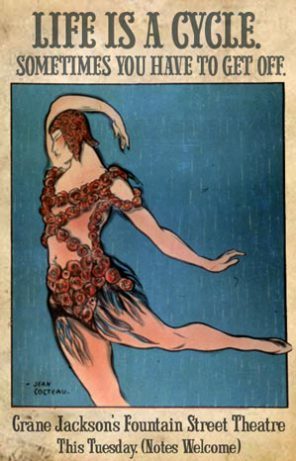
Although Dudeists may lack three thousand years of beautiful tradition, from Moses to Sandy Koufax, we do share the great spiritual insights espoused by many great Dudes throughout the ages. As our Dudely Lama once wrapped it all up for us:
“Life is short and complicated and nobody knows what to do about it. So don’t do anything about it. Just take it easy, man. Stop worrying so much whether you’ll make it into the finals. Kick back with some friends and some oat soda and whether you roll strikes or gutters, do your best to be true to yourself and others – that is to say, abide.”
Knowing that, now you can die with a smile on your face without feelin’ like the Good Lord gypped you. And that’s what Dudeism’s all about.
See ya later on down the trail.
_______________________________________
Reposted from the article By Rev. Dwayne Eutsey,
Arch Dudeship
–
http://dudeism.com/takeiteasymanifesto/

